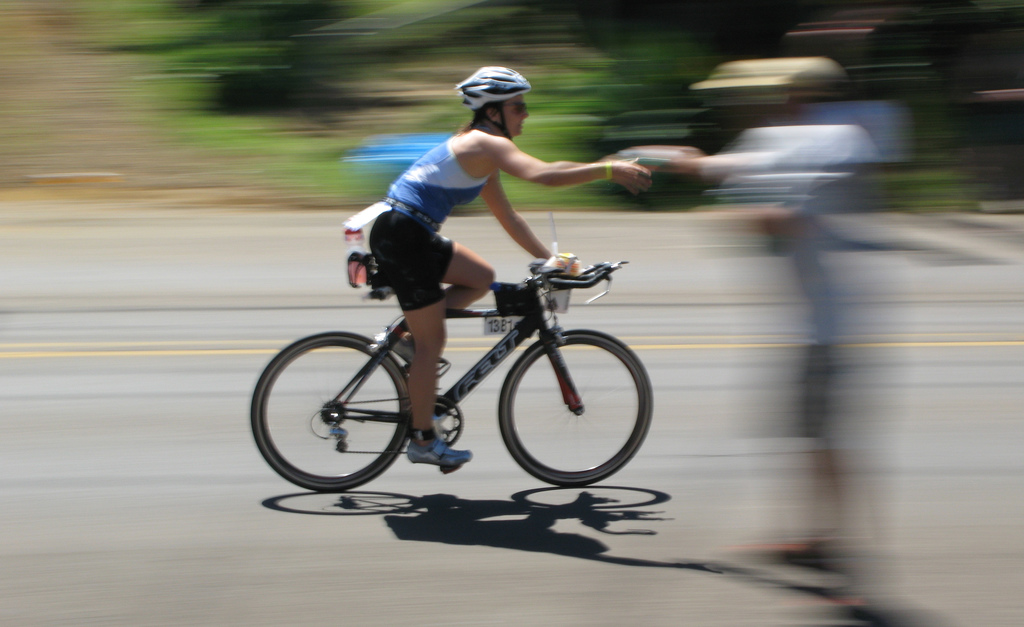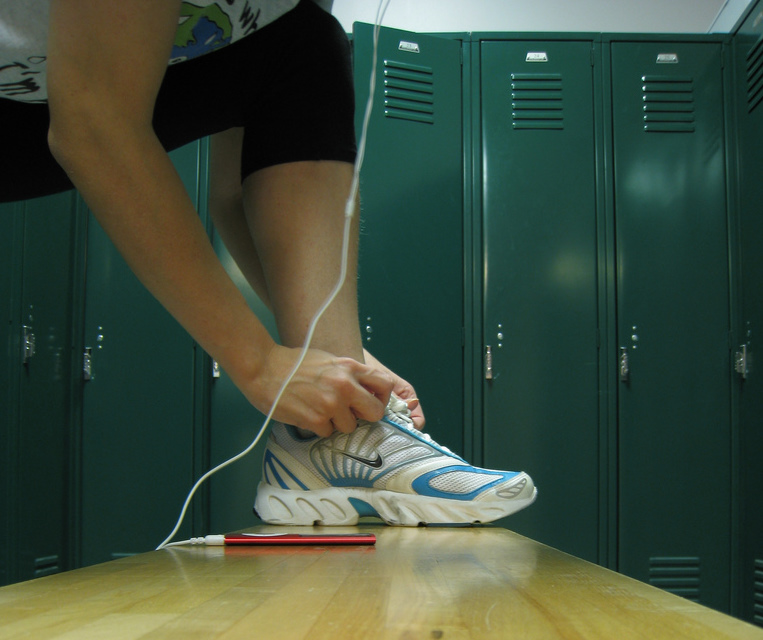Is your activity tracking gadget accurate? Do you care?
“Jawbone UP gives me 2,025 steps for 20 mins of drumming to REM and Smash Pumpkins. yfrog.com/mgrzudp” @dvansickle, Twitter
Activity tracking devices are just like real estate: what matters is location, location, location.
If you own—or plan to own—a Fuelband, Fitbit, Metria, BioHarness, UP or other fitness tracking gizmo, you should consider whether the device straps to your wrist, clips to your belt, or is embedded in your shoe. Otherwise you may rack up thousands of steps for activities such as drumming or playing the piano … without taking a single step. Or you may walk for miles while pushing a stroller or lawn mower and end up with a count of zero steps.
Accelerometers R Us
Most popular tracking devices use an accelerometer to monitor your movement. This detects acceleration, which is your change in speed relative to time, or velocity/time in m/s2. (You may recall from physics class that velocity is distance/time). Many of the devices measure acceleration in 3 planes, hence they are known as triaxial or 3D. The planes are X, Y, and Z, which are your accelerations from front to back, side to side, and up and down.
But if the sensor can’t detect a change in your velocity, nothing is measured. Thus the location of these devices on your body is crucial for their accuracy, as is how well they are attached to that location.
Here’s the lowdown on tracker real estate from head to toe:
Head
Accelerometers located on your head measure acceleration of your head. Although you’re probably saying “duh” this is a key concept that is surprisingly easy to overlook. Accelerometers placed in mouthguards and in or on helmets are used to detect impact to the head and brain to better understand concussions and other head injuries. This location is also used by researchers to study balance and falls. Examples of devices that are located on the head: Impact Sensing Mouthguard, Shockbox Hockey Sensor, HEADS
Trunk
If your goal is to measure acceleration of your entire body, wearing a sensor near your center of mass (near your waist or lower back) is the way to go. Measuring the acceleration of your torso best represents your overall motion, and tends to give the best estimation of energy expenditure (calories burned).
A sensor that attaches on your waistband is a good choice to track a walk or run. Another good place is near your breast bone (clipping a device to a sports bra, wearing a device as part of a chest strap). Examples of devices that attach to the trunk: Fitbit, Active Link, Body Guardian, Actiheart, Metria, BioHarness
Thigh
This location is typically used to determine time spent sitting, standing and walking, and to assess sitting to standing transitions. This location is commonly used in research to study the health problems associated with sitting too much. Examples of trackers that attach the thigh: ActivPAL, Actigraph
Wrist and Arm
Sensors that attach to a limb basically provide information on the acceleration of that limb. So if you don’t move the limb—even if the remainder of your body is moving—your movement may be recorded as zero. (For example, wearing a sensor on your wrist while pushing a stroller or lawn mower, or while cycling.) And if you’re sitting still but you limbs are moving a lot (drumming, playing the piano), you may rack up big numbers.
Examples of trackers that attach to the wrist or arm: Jawbone UP, Nike+ Fuelband, Larklife smart band, Basis band, BodyMedia
The wrist is also a common location to place sensors to determine sleep patterns. Examples: Actiwatch, Lark Pro, WakeMate, ActiSleep
Ankle and Foot
Sensors that attach to the ankle provide information on the acceleration of the leg, thus this location is often used for gait analysis. Distance, velocity and energy expenditure can all be estimated.
The foot is the best site to place a sensor for measurement of a vertical jump, because it’s closest to the site of ground contact. Thus the popularity of shoes with sensors that advertise their ability to give you g-force, which is multiples of the acceleration of gravity (g = 9.81 m/s2). When you jump, your tendons, bones, muscles, and other structures absorb the impact energy. So as a sensor is moved further up your body (ankle, waist) the measurement of g-force will decrease. Examples: adidas adizero f50, LeBron X+ Sport Pack
Attachment matters
Activity trackers may attach directly to your skin via adhesives, strap or clip on, be placed in a pocket or purse, be attached to a keychain, or be integrated into clothing. The tighter the contact with your body, the more accurate the measurement will be. The looser the contact, the less accurate the sensor will be as increased vibration and movement artifacts muddy the measurements.
Does accuracy matter?
In some situations, there is absolutely no room for error in detecting even the tiniest of movements in all 3 planes. For an extreme example, consider radiation therapy for brain cancer where even a nearly imperceptible movement by someone could negatively affect their outcome. In this case an accelerometer attached to the head must accurately detect fractions of degrees of rotation in all three planes.
But if you’re using your device to motivate you to get up from a chair and get out your front door, it may not matter that your tracker is off by a few hundred counts or tenths of miles, or that the estimate of calories you’ve burned is off by the equivalent of a bagel.
Do you have any tracking gadgets? Have you tested or compared them see how accurate they are? If so, what did you find?
Wearable Tech Pinterest Board: Tracking gadgets, gizmos and garments, with links to tracker company sites.
Further reading on tracker accuracy
- Activity Trackers, Tactio Health Group (PDF)
- Why fitness tracker calorie counts are all over the map, Sean Downey, Wired Playbook
- It’s Hard to Stay Friends With a Digital Exercise Monitor, Jenna Wortham, The New York Times
- Jawbone UP review: An activity tracker that gets it mostly right, Darrell Etherington, GigaOM
- Health devices at a glance, MisFit Wearables graphic
Related posts
- Track, Share and Compare: The Hot Trend of Self-Tracking
- Self-tracking meets ready-to-wear: Make room in your closet for smart clothes
- Self-tracking, Sensors, and mHealth: Trends and Opportunities
- Self-tracking: Checking under the hood
- What sensor technology would you want in a $300 pair of sneakers?
- Why it’s Easy to Fool Your Activity Tracker and What You Can Do About It









Trackbacks & Pingbacks
[…] door. (Tracker accuracy is a huge pet peeve of mine; there were too many issues to cover here. See: Is your activity tracking gadget accurate?) Band-aid: Protected my wound from dirt and sweat while I was racking up all the […]
[…] Is your activity tracking gadget accurate? Do you care? […]
Leave a Reply
Want to join the discussion?Feel free to contribute!